Sprint’s Gigabit Class LTE network goes live in New Orleans
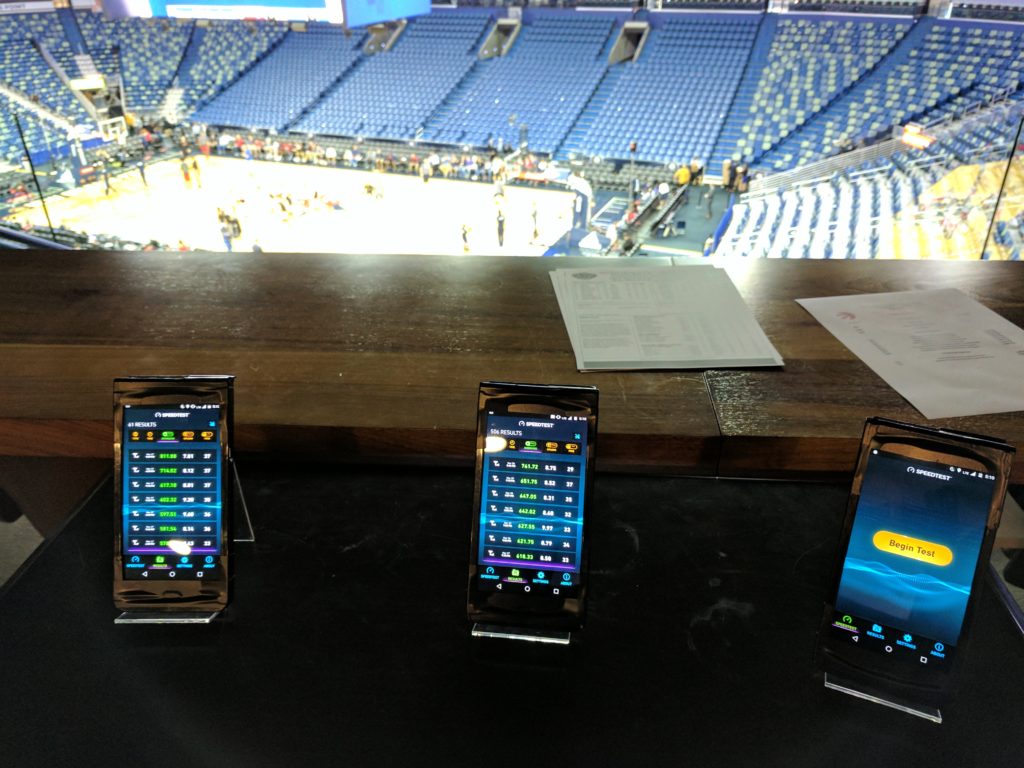
On Wednesday night at an event held at Smoothie King Center in New Orleans, Sprint showed off commercial readiness of their Gigabit Class LTE network, achieving peak speeds in excess of 700Mbps in a live network. Nokia provided the infrastructure including Nokia Flexi basestations installed throughout the basketball arena, permanently adding coverage and capacity.
Motorola supplied pre-commercial Category 16 LTE handsets powered by the Qualcomm Snapdragon 835 SoC, with integrated Gigabit Class X16 LTE modem. The yet to be released device supported 256QAM Modulation, and included a quad antenna design for 4×4 MIMO operation on Sprint’s 2.5GHz network.
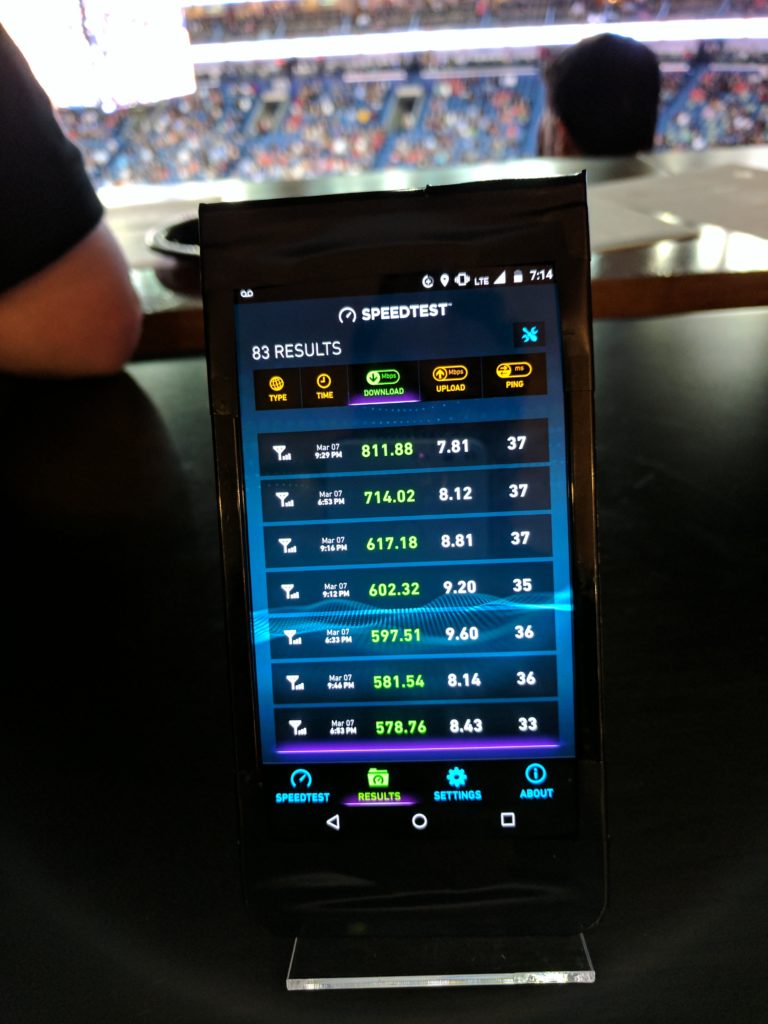
Sprint has rolled out Three-Way Carrier Aggregation (3xCA) leveraging 60MHz of 2.5GHz spectrum throughout the New Orleans market, and the most recent Nokia software push enabled additional advanced LTE features such as 256QAM on the downlink, 4 Layer MIMO, Transmission Mode 9, TDD config 2.
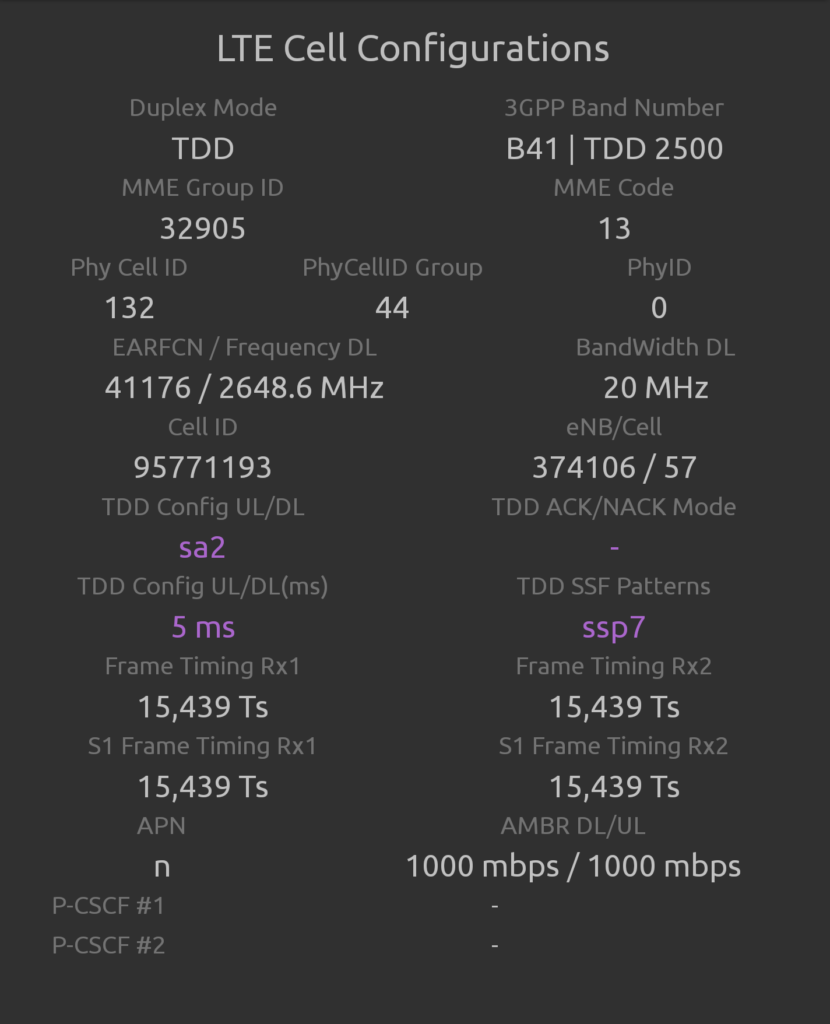
With 20MHz wide carriers and TDD configuration 2, Sprint can achieve peak speeds of 112.5Mbps per component carrier, assuming 2×2 MIMO. Higher Order Modulation (256QAM) provides 33% efficiency gain for 150Mbps. 4X4 MIMO effectively doubles data rates to 300Mbps. Since the X16 modem supports up to 10 streams, two out of three component carriers can leverage 4 Layer MIMO (4×4 MIMO), while the third component carriers remains at 2×2 MIMO. Therefore, in this particular setup, the peak downlink rates top at about 750Mbps. Sprint actually had a few tests peaking over 750Mbps, which is likely due to external issues with Ookla servers, or the size of the Speedtest test file. Worth noting that with the TDD configuration 2, there is a drop in uplink speeds since the additional subframes are being allocated for the downlink operation. 64QAM or Uplink Carrier Aggregation could potentially improve uplink data rates, but in order to leverage the benefits of High Performance User Equipment (HPUE) a single uplink carrier is likely to be used for the time being.
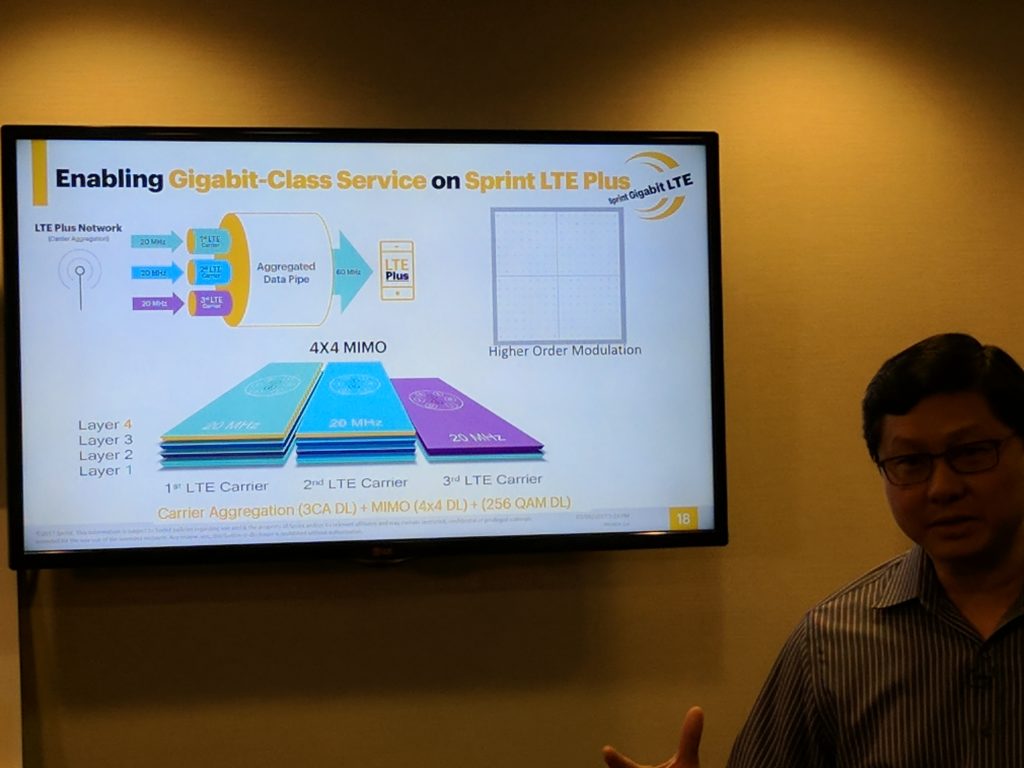
Sprint CTO John Saw confirmed that they are in the process of pushing the software upgrade to a dozen of Nokia/ALU markets nationwide, just in time for the influx of Gigabit Class LTE capable Snapdragon 835 powered devices. It’s worth mentioning that the upcoming Snapdragon devices will be HPUE enabled, which should enhance the coverage of 2.5GHz TDD layer by up to 30%. HPUE capable devices will operate at a 3dBm higher transmit power (26dBm), improving the link budget and allowing for more consistent data rates throughout the cell, especially in fringe areas of coverage. Recently announced LG G6 is the first HPUE device, with more to follow.
Sprint’s journey to 5G also includes Massive MIMO, which they plan on deploying later this year. Massive MIMO strategy will involve replacing the existing 8T8R infrastructure with new 64T64R Nokia AirScale Adaptive Antenna solution, which will further improve the TDD LTE coverage with 3D Beamforming, and deliver vastly improved capacity at cell sectors, in excess of 3Gbps.
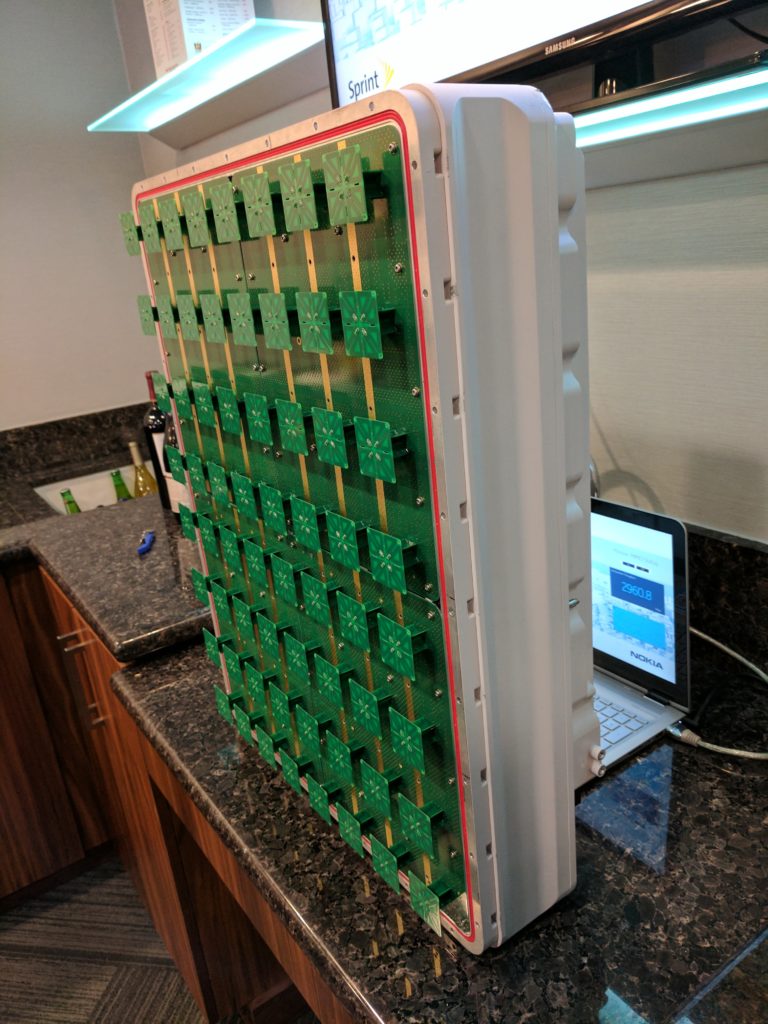
With HPUE, Massive MIMO, 60MHz of deployed, 100MHz of untapped TDD spectrum, and a solid CDMA voice reliability, Sprint really doesn’t seem to be in a rush for spectrum refarming, FDD+TDD aggregation, or VoLTE rollout. Gigabit Class LTE networks will be able to operate much more efficiently, and as a result deliver more capacity and better peak and median rates to all subscribers. Sprint is well positioned to offer impressive capacity to its subscribers, and we truly hope they will be able to execute and deliver at scale.


Martin Schultz • 8 years ago
I really dont understand that big difference between upload and download, I know most people mostly use the download speed bu 800 down and less than 10 up seems absurd. On mobile devices I also want to share the HD movies I record and 4K recording is comming to high end devices so people have a interest in sharing big files.
Mike H • 8 years ago
The difference is in the way they optimize the network. Instead of giving uplink and downlink the exact same 50% / 50% timeslices, they vastly prioritize the timeslices for downlink leaving uplink far slower compared to other providers :(